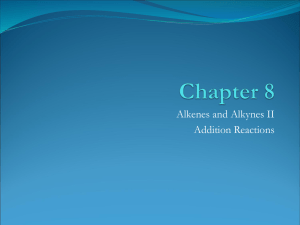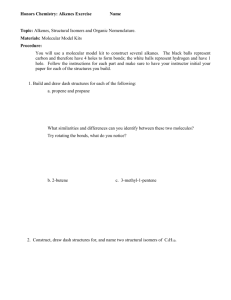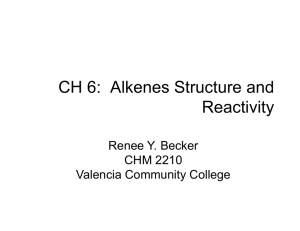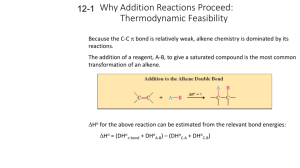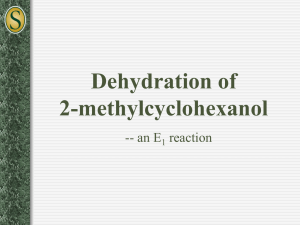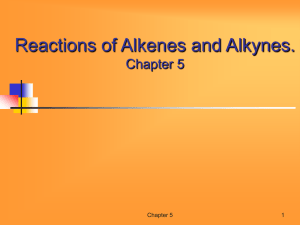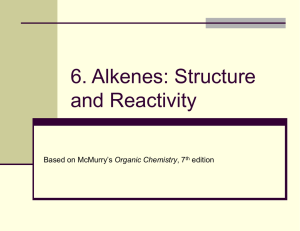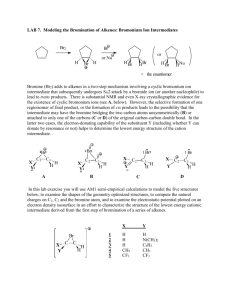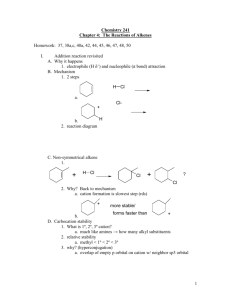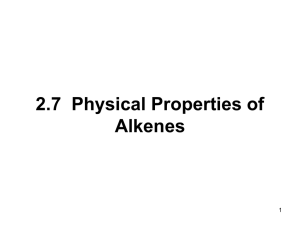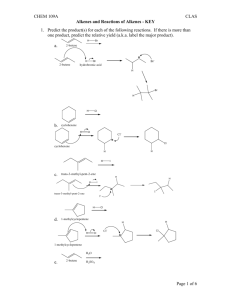Electrophilic Addition Reactions: Mechanisms & Stereochemistry
advertisement
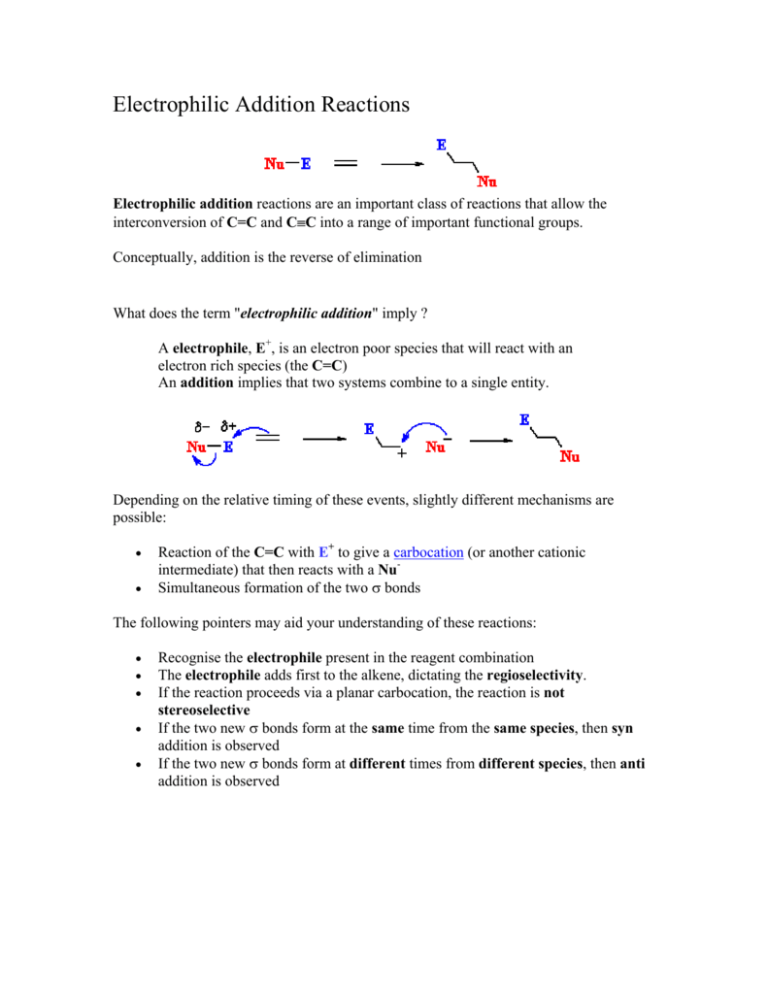
Electrophilic Addition Reactions Electrophilic addition reactions are an important class of reactions that allow the interconversion of C=C and C≡C into a range of important functional groups. Conceptually, addition is the reverse of elimination What does the term "electrophilic addition" imply ? A electrophile, E+, is an electron poor species that will react with an electron rich species (the C=C) An addition implies that two systems combine to a single entity. Depending on the relative timing of these events, slightly different mechanisms are possible: • • Reaction of the C=C with E+ to give a carbocation (or another cationic intermediate) that then reacts with a NuSimultaneous formation of the two σ bonds The following pointers may aid your understanding of these reactions: • • • • • Recognise the electrophile present in the reagent combination The electrophile adds first to the alkene, dictating the regioselectivity. If the reaction proceeds via a planar carbocation, the reaction is not stereoselective If the two new σ bonds form at the same time from the same species, then syn addition is observed If the two new σ bonds form at different times from different species, then anti addition is observed Hydrogenation of Alkenes Reaction Type: Electrophilic Addition Summary • • • • Alkenes can be reduced to alkanes with H2 in the presence of metal catalysts such as Pt, Pd, Ni or Rh. The two new C-H σ bonds are formed simultaneously from H atoms absorbed into the metal surface. The reaction is stereospecific giving only the syn addition product. This reaction forms the basis of experimental "heats of hydrogenation" which can be used to establish the stability of isomeric alkenes. CATALYTIC HYDROGENATION Step 1: Hydrogen gets absorbed onto the metal surface. Step 2: Alkene approaches the H atoms absorbed on the metal surface. Step 3: C=C reacts with the H atoms on the surface forming the two new C-H σ bonds. Reaction of Alkenes with Hydrogen Halides Reaction type: Electrophilic Addition Summary • • • • • When treated with HX alkenes form alkyl halides. Hydrogen halide reactivity order : HI > HBr > HCl > HF (paralleling acidity order). Regioselectivity predicted by Markovnikov's rule : "For addition of hydrogen halides to alkenes, the H atom adds to the C with the most H atoms already present" Reaction proceeds via protonation to give the more stable carbocation intermediate. Not stereoselective since reaction proceeds via planar carbocation. MECHANISM FOR REACTION OF ALKENES WITH HBr Step 1: An acid/base reaction. Protonation of the alkene to generate the more stable carbocation. The π electrons act pairs as a Lewis base. Step 2: Attack of the nucleophilic bromide ion on the electrophilic carbocation creates the alkyl bromide. Hydration of Alkenes Reaction type: Electrophilic Addition MECHANISM FOR REACTION OF ALKENES WITH H3O+ Step 1: An acid / base reaction. Protonation of the alkene to generate the more stable carbocation. The π electrons act pairs as a Lewis base. Step 2: Attack of the nucleophilic water molecule on the electrophilic carbocation creates an oxonium ion. Step 3: An acid / base reaction. Deprotonation by a base generates the alcohol and regenerates the acid catalyst. Halogenation of Alkenes Reaction type: Electrophilic Addition Summary • • • • • Overall transformation : C=C to X-C-C-X Reagent : normally the halogen (e.g. Br2) in an inert solvent like methylene chloride, CH2Cl2. Regioselectivity : not relevant since both new bonds are the same, C-X. Reaction proceeds via cyclic halonium ion. Stereoselectivity : anti since the two C-X bonds form in separate steps one from X2 the other X-. MECHANISM FOR REACTION OF ALKENES WITH HALOGENS Step 1: The π electrons act as a nucleophile, attacking the bromine, displacing a bromide ion but forming a cationic cyclic bromonium ion as an intermediate. Step 2: Attack of the nucleophilic bromide from the side away from the bromonium center in an SN2 like fashion opens the cyclic bromonium ion to give overall trans addition. Halohydration of Alkenes Reaction type: Electrophilic Addition • • Regioselectivity : X reacts as the electrophile so the C-O bond forms at the more stable cation center. Stereoselectivity : anti since the two new σ bonds form in separate steps. MECHANISM FOR REACTION OF ALKENES WITH Br2 / H2O Step 1: Same first step as for the reaction of Br2/CH2Cl2. The π electrons act as a nucleophile, attacking the bromine, displacing a bromide ion but forming a cationic cyclic bromonium ion as an intermediate. Step 2: Attack of the nucleophilic water molecule from the side away from the bromonium center in an SN2 like fashion opens the cyclic bromonium ion to give overall trans addition. Step 3: An acid / base reaction converts the oxonium into the alcohol.
